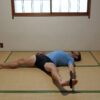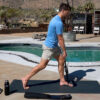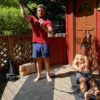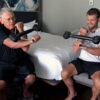What Is Isometric Exercise?
Have you ever been to a workout class, or completed a workout video? Well, you know the part in the workout where you do a move, and the instructor says “Okay, now HOLD”, and then they start counting down backward from what seems like a million? Your muscles start shaking, sweat is dripping, and you just. Hold. Still.
That is an isometric exercise.
That’s the cool thing about isometric leg exercises. They are a great way to increase overall strength without doing high-impact exercises. One huge perk of isometric leg exercises is that they can be completed anywhere, with no equipment necessary (except maybe a wall). Bust into a lunge hold while walking in the grocery store, or do a wall sit in your cubicle. Isometric leg exercises are easy and convenient ways to work out anytime, anywhere.
To get a little more specific, the word “isometric” literally means “same metric”. That is to say that during these exercises, the muscles involved stay the same length. They don’t get any longer, and they don’t get any shorter because no motion is taking place.
While doing these exercises, a specific muscle, or muscle group, is targeted and contracted. The muscles and joints don’t move. They are moved into the correct position, they contract, and then they hold that tension for several seconds up to minutes, wearing out the targeted muscles. While it sounds relatively simple (because it is), it is taxing for the muscle(s) being used.
Isometric Leg Exercises for Strength
It is important to do isometric exercises in multiple positions, as each exercise only improves strength in one position. Targeting each muscle from different angles is crucial for building and maintaining strength.
Think about a move like a wall sit. You place your back to the wall, feet in front of you. Then slide down as low as you can until you are in a squat position, supported by the wall. And then you wait. In just a few seconds, your legs start to burn. And then they start to shake. Not only does this isometric leg exercise target your quadricep muscles, but it also uses your calves, hamstrings, glutes, and core muscles. The longer you hold the position, the more your muscles develop their endurance to perform this challenge.
Isometric Leg Exercises for Recovery
As these exercises are completed without excessively moving, they are specifically helpful when recovering from injury. When injured, movement can be extremely painful. They have also shown to be exceptionally beneficial for those with arthritis, as with less movement comes less stress on inflamed joints.
So, isometric exercises may come as a recommendation from a doctor or physical therapist. They may target the muscle groups near the injury to help encourage stability and strength throughout the recovery process.
Say, for example, you injured your knee. You have been working toward recovery, but your doctor says you should not lift weights or do any intense activity yet. Instead, your physician recommends isometric leg exercises to maintain muscle strength in and around your knee. A straight leg raise, for example, is done while lying on your back. With one leg bent, you lift your other leg straight up from the ground and hold it there for a few seconds or minutes. This isometric activity doesn’t put extra weight on your injury, but it requires strength from the entire leg and core muscles.
While most isometric exercises do not require the use of weights, but weights can be incorporated to provide more resistance. But keeping isotonic exercises low-impact means they are generally safe for injury recovery. As always, if you experience pain while doing isometric training, stop immediately.
Common Benefits of Isometric Exercises
- Multiple studies have shown that isometric exercise effectively lowers blood pressure.
- Static training has resulted in increased muscle strength and stability.
- Many who participate in isometric exercises have noticed pain relief, specifically in their lower back, knees, and neck.
- Isometric exercise improves endurance with an increase in the ability to hold weight for an extended amount of time. With this often comes an improvement in posture.
- Isometric training is low impact which means they are generally safe exercises for people with arthritis and injuries.
- Isometric exercises utilize many muscle fibers simultaneously.
- Simple and controlled, isometric exercises are typically easier to accomplish and require less practice and experience to perform correctly.
- Many who perform isometric exercises experience less muscle fatigue and soreness than that which is commonly experienced after lifting weights. This is helpful for athletes who must train very frequently.
Isometric Leg Exercise Examples
Wall Sit: One of the most well-known isometric leg exercises is the wall sit. It’s basically like doing a squat with your back pushed up against a wall. It looks like you are sitting in a chair, without a chair. Keep your knees bent at a 90-degree angle and hold this sitting position. It’s difficult, and you will definitely feel the burn all throughout your legs, glutes, and core.
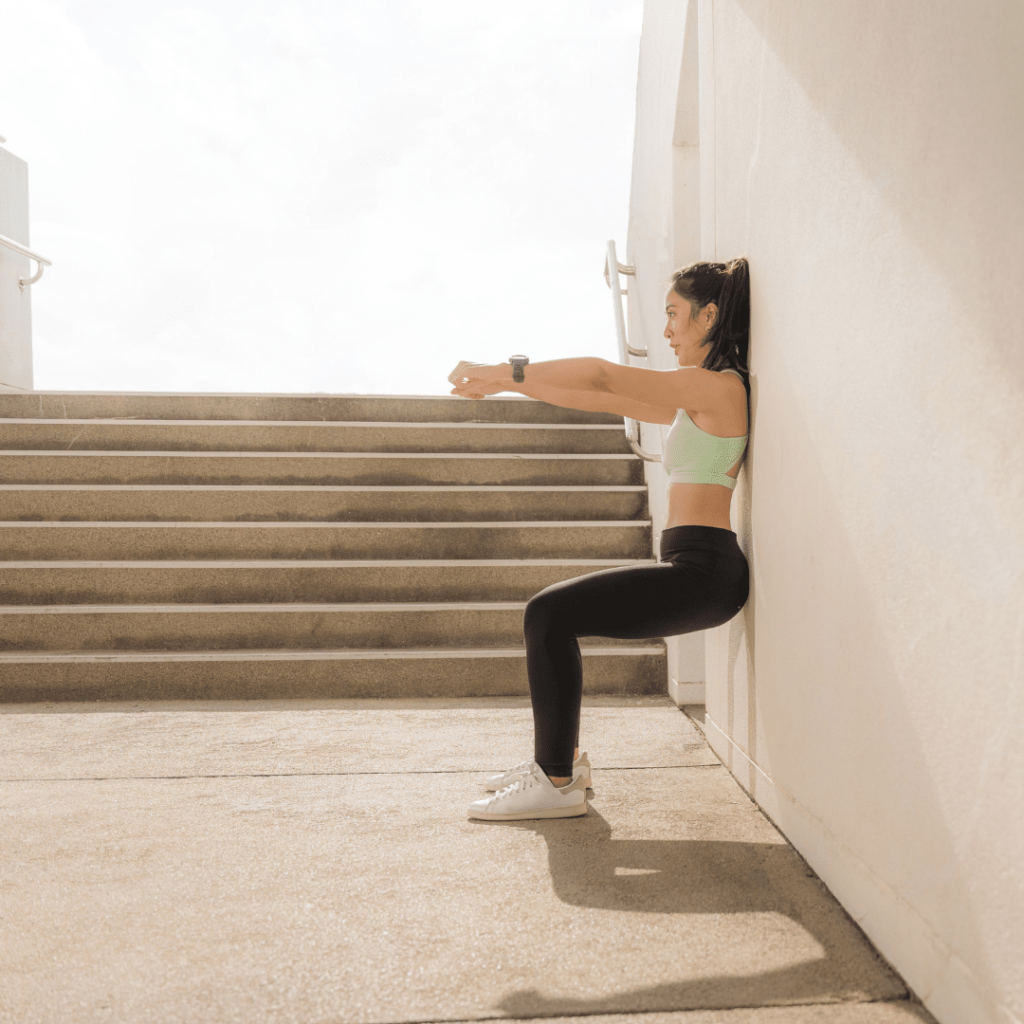
Single-Leg Wall Sit: Very similar to the wall sit, this exercise again has your back to a wall, knees bent in a squat position, and then just to throw a wrench in things, lift one leg straight out in front of you. It takes a whole lot of balance and muscle control.
Lunge Hold: Start by standing with both feet together. Extend one leg forward in front of you. Bend your front knee, being sure your knee stays aligned with your ankle. Lunge and hold the position. There are many different versions of this exercise with slight modifications. Side lunge hold and straight leg lunge hold are a couple worth mentioning.
Sumo Squat Hold: This static leg exercise specifically targets the inner thigh, quadriceps, hamstrings, calves, hip flexors, and glutes. Stand with your feet just wider than your hips with your toes pointed slightly outwards. Slowly lower your hips until your upper leg is parallel to the ground. Hold for several seconds or minutes at the lowest point.

Standing Leg Raise: Start by standing with your feet shoulder-width apart and place your hands on your hips. Support your weight completely on your right foot while gradually lifting your left leg straight in front of you. Lift your leg as high as you can while still standing comfortably. Keep your toe pointed, knees straight, and core muscles engaged. After holding this position, lower the right leg and switch to the left leg.
Plank: Another widely known isometric leg exercise is the plank. Begin by doing a pushup, then bend and place your forearms on the ground under your shoulders. Keep your body in a straight line from shoulder, hips, and ankles. Keep your ab muscles engaged as you hold this position, gradually increasing the time as you become stronger.
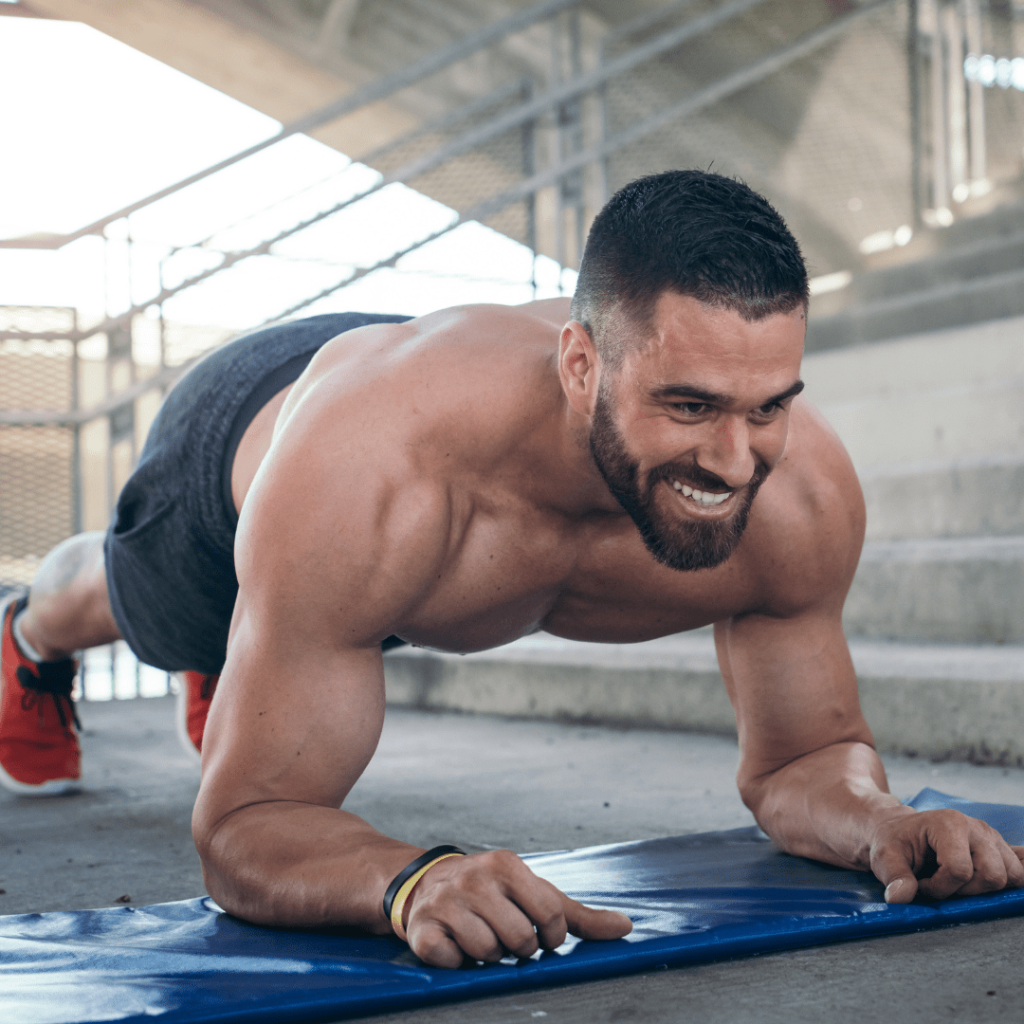
Yoga: Yoga poses are fantastic examples of isometric exercises. You get into the correct position and pause. The pose is held while you breathe, your muscles tiring under your own body weight until you move to the next pose to hold.
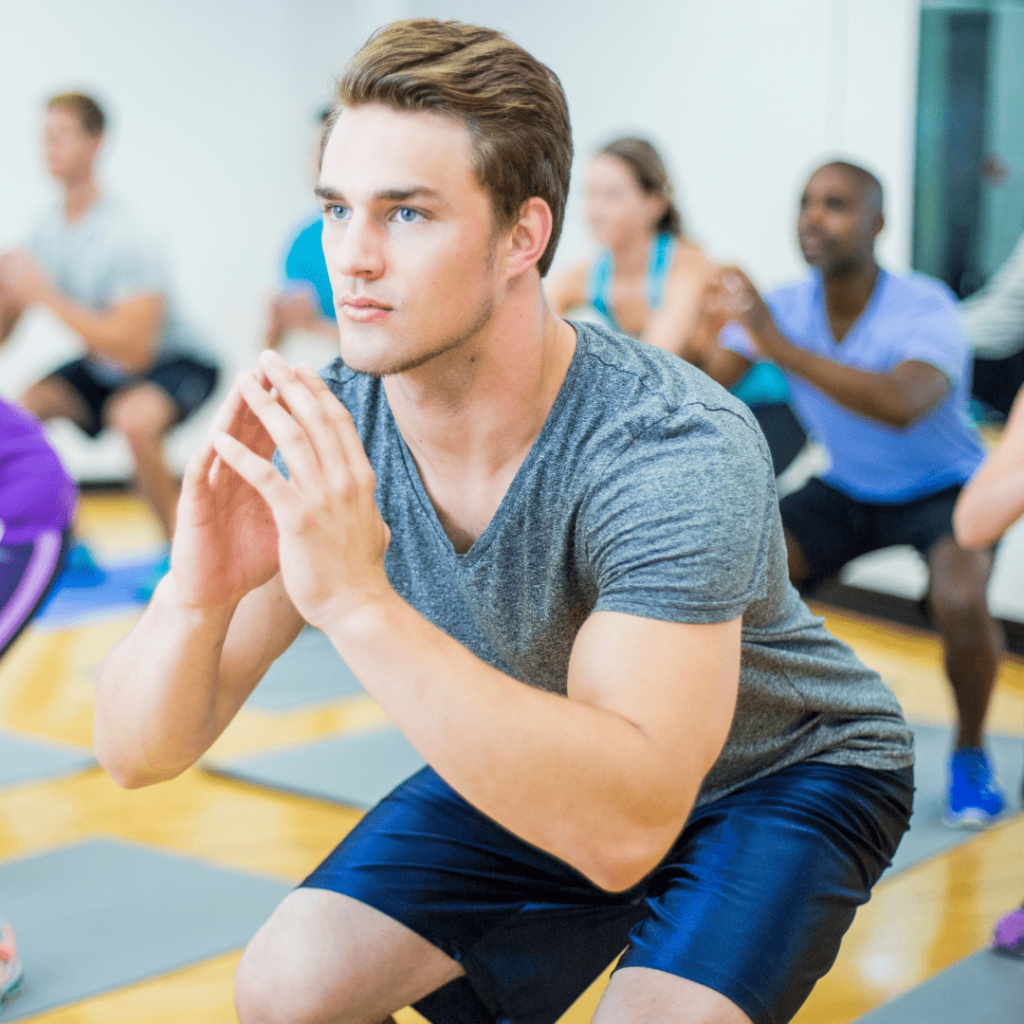
There are a huge variety of lists and videos with countless isometric leg exercises that can be used for strength training and endurance improvement. Try out the single-leg wall drive, ½ squat ½ deadlift hold, single-leg deadlift hold, single-leg wall kickback hold, single-leg chair pose, and, of course, multiple versions of the plank, as well as countless other positions.
Adding Variations to Isometric Leg Exercises
As with most exercises, there are many ways to modify isometric leg exercises. Most commonly, they are performed with only body weight as resistance. However, there are always options to change positions and amount of resistance. Try these ideas to spice up your isometric leg workouts.
- Add some weights: More weight equals more resistance, which leads to an increase of benefits to your body. The harder you work your muscles, the stronger they will become. However, as your muscles tire, be sure to maintain adequate form to get the maximum benefit to your muscles. Even the slightest adjustments can reduce impact and success.
- Try using resistance bands: Similarly to weights, these apply more resistance and demand more output from your muscles. Although, many argue resistance bands are a better choice. The bands are more dynamic as they are constantly changing and stretching with any movement, large or small, made during the exercises.
Other Iso- Exercises
There are other types of exercises worth learning about including isotonic and isokinetic.
In contrast to isometric poses, isotonic exercises require your muscles to have constant tension while the joints are moved through a full range of motion. During these exercises, the muscles lengthen and shorten. Isotonic can be defined as “same tension”. So, the amount of stress and weight on the muscle stays equal throughout the entire exercise. An example of this would be squats.
Isokinetic exercises require very specific types of machinery. These are not commonly performed in an average workout but are often used to help athletes train. Isokinetic can be defined as “same speed”. So these exercises improve the rate at which athletes can move their body/limbs or possibly a weight. The machinery used encourages the athlete’s muscles to move at a consistent speed, which can be increased as the training progresses.
Different Types of Isometric Exercises
Yielding Isometrics are the most commonly used type of static exercise. They are often called isometric holds. These isometric exercises entail holding a specific position for a period of time. One of the key differences from the other types is that this level requires that you do not max out.
Extreme Isometrics share a lot of similarities with yielding isometrics. You hold a position with muscles contracted. Although, with this type, the angle of the position is extreme. As these poses are much more difficult, the time spent in each position will be much shorter. An increasing time interval with 10 seconds of rest between holds is recommended for these types of isometric exercises. Start with a 10-second hold, followed by a 10-second rest. Then a 20-second hold with a 10-second break. Two more holds for 30, then 40 seconds with 10 seconds rest in between. Following this structure will provide the best benefits.
Overcoming Isometrics are when you hold a position, applying pressure against a stationary, immovable object. Without moving the joints, muscles are contracted and force is applied for short bursts. The only way to maximize benefits from these exercises is to exert all of your power, completely max out the muscles being used. To prevent injury, it is extremely important to make sure your form is correct at the beginning and throughout the entire exercise.
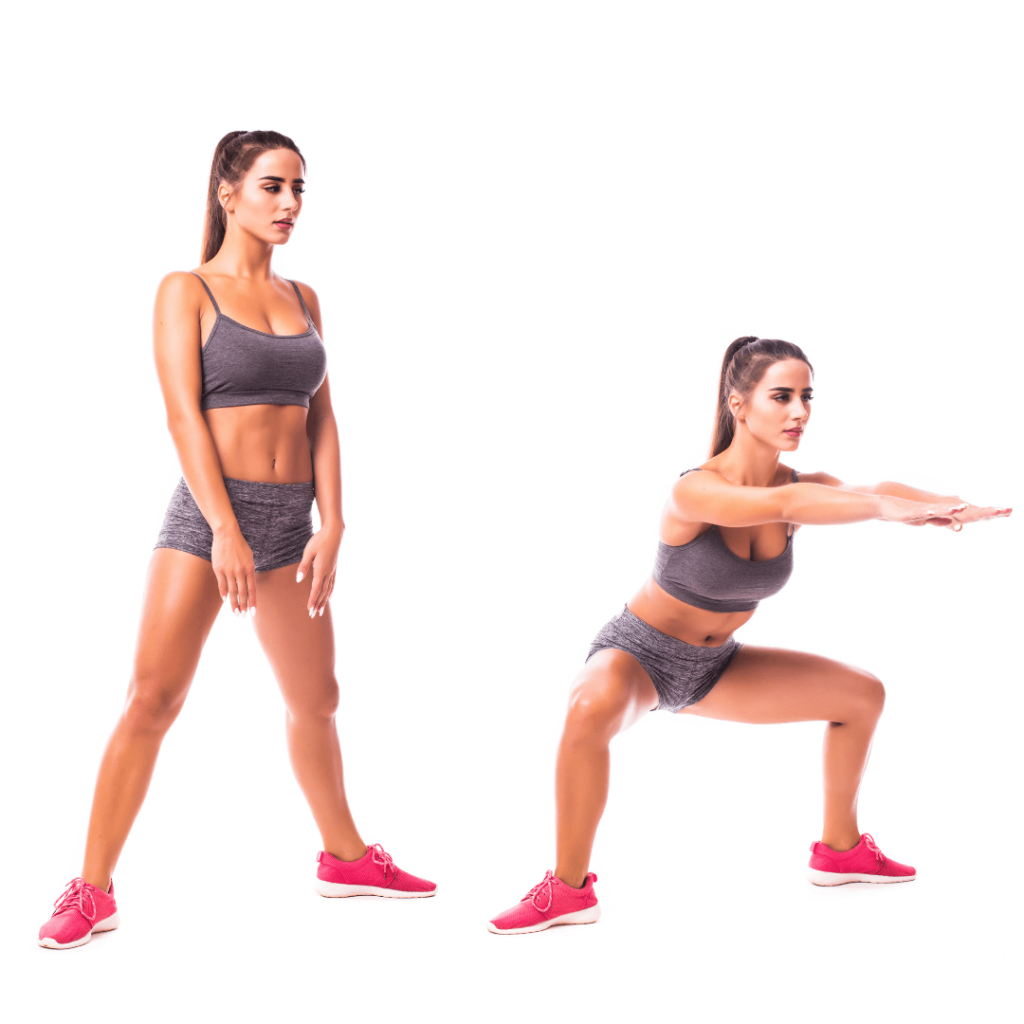
Limitations of Isometric Exercise
Although isometric exercises are generally considered safe, if they are performed with inaccurate form, they can result in new injuries or potentially aggravate preexisting injuries. Be sure you use the proper form to maximize the effectiveness of the isometric leg exercises being performed.
There are limitations to static exercises. When you get in position and hold that position, the muscles being used are strengthened only in that position as well. That is to say that performing enough repetitions in enough positions can be very time-consuming. That being said, if they are being completed properly and providing resistance to the targeted muscles in several different positions, the muscles can become well-rounded and be strengthened all around.
As with any exercise, if you experience pain while doing isometric training, stop immediately.
Try Isometric Leg Exercises
Isometric exercises are very customizable. Start by holding simple poses, for short amounts of time. Even just a few seconds of repeated resistance will strengthen muscle. As the poses become more easily achievable, increase the amount of time spent holding the position.
These poses and exercises may seem simple because they usually are. But depending on your fitness goals, you can see incredible results from maximizing your workout by pushing your muscles to contract more powerfully, more quickly, for longer amounts of time through isometric exercises.
